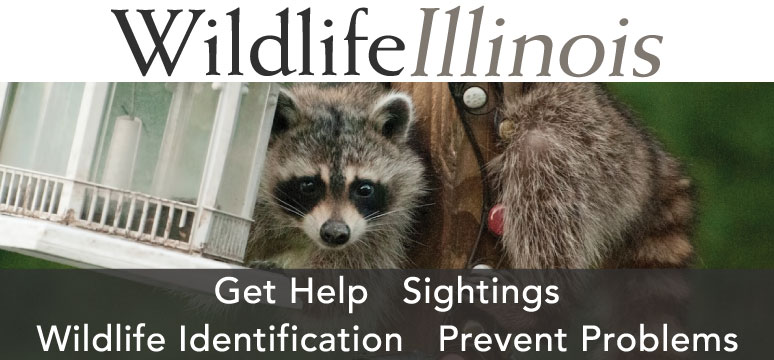
Photo by Michael R. Jeffords.



Photo by Michael R. Jeffords.

It is cold and lightly raining, but we can hear wild turkeys from where we sit behind our makeshift blind. We watch intently through small holes in the blind as they slowly emerge from the tree line beyond our net. From the game-camera recordings of this location, we know that turkeys have been feeding at this bait site for the past week. Over the piles of cracked corn, we raised a drop-net that we’ll use today to catch as much of the flock as possible.
Single-file, the turkeys waddle under the net and begin to feed. 1…3…8 turkeys are now under the net. After a few more hens wander to the corn, I give the thumbs up to my soggy crew, switch on a remote control, and press a button to drop the net. All at once, we run and stumble through the field to secure the turkeys under the net, and remove them individually to be placed in temporary holding crates.

Scientists with the Illinois Natural History Survey recently began studying wild turkeys (Meleagris gallopavo) in south-central Illinois to determine how forest management (e.g., prescribed fire and tree thinning) may influence habitat use and nesting behavior among turkey hens. The research is supported by the Illinois Department of Natural Resources through a Pittman-Robertson grant administered by the U.S. Fish and Wildlife Service. As of April 2016, INHS scientists have banded 95 turkeys, and deployed 70 micro-GPS transmitters on turkey hens.

Quite different from hunting, successful turkey research is entirely dependent on catching lots of turkeys, rather than one big gobbler. When we capture a flock of turkeys, we mark each bird with a uniquely numbered leg band. Onto the back of each hen, we tie a backpack-style micro-GPS unit. Each unit is programmed to record a location every 2 hours during daylight hours (8 total locations) and once at midnight to record a roost location. Units are expected to last approximately one year due to battery life. Location data from each unit is downloaded remotely (up to ¼ mile from hen) using a special receiver connected to a telemetry antenna.

Visualizing hen locations with mapping software, we see where and when hens spend time throughout the year, and can remotely determine nest locations. Nests appear as a cluster of location points, and the date and time associated with each location permits us to determine the time when nest incubation began. We then estimate when nests will hatch (usually 28 days after onset of incubation), and later determine if a nest successfully hatched, was abandoned by the hen, or eaten by a predator.
With details of habitat use, nest success and predation, we will provide a better understanding of how forest management practices may influence turkey movements and reproduction. The third year of this research, starting in January 2017, will begin with baiting and capturing turkeys to release them with additional micro-GPS units.

Christine Parker is a PhD candidate at the University of Illinois at Urbana-Champaign and works with Illinois Natural History Survey Avian Ecologist and advisor Jeff Hoover. Parker is broadly interested in forest-bird ecology, and is studying the relationship between forest management, wild turkey habitat use and incubation behavior.
Submit a question for the author